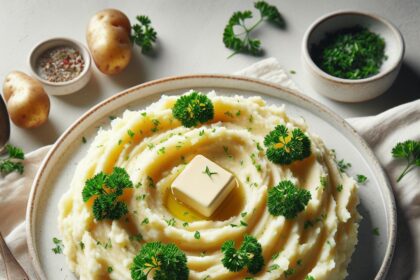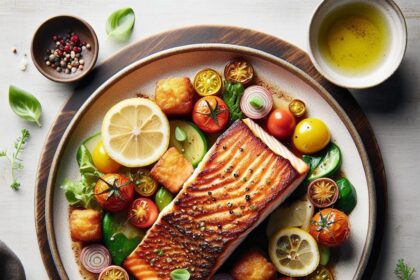There’s a certain magic in slow cooking-when humble cuts of meat transform into tender, flavorful masterpieces that melt effortlessly on the tongue. Unlocking this alchemy begins with choosing the right cuts, each brimming with potential to soak up spices, release rich juices, and create that deep, comforting taste slow-cooked dishes are known for. Whether you’re simmering a rustic stew, braising a holiday roast, or perfecting a pot roast, knowing which meat cuts thrive in the gentle embrace of slow heat is the secret to culinary success. Join us as we explore the top meat cuts that unlock extraordinary flavor through slow cooking, turning everyday meals into unforgettable experiences.
Choosing the Best Cuts for Tender, Juicy Results
Unlocking flavor with slow cooking techniques begins by selecting the ideal cuts of meat that thrive under gentle, prolonged heat. This method transforms tougher, flavorful cuts into succulent dishes bursting with complexity and melt-in-your-mouth tenderness. Whether you favor beef, pork, or lamb, understanding which cuts excel in slow simmering will elevate your culinary creations and inspire confidence in your slow cooking journey.
Prep and Cook Time
- Preparation: 20 minutes
- Cooking: 3 to 8 hours (depending on cut and method)
- Total Time: Approximately 4 to 8.5 hours
Yield
Serves 6 to 8 hearty portions
Difficulty Level
Medium – Perfect for those comfortable with slow cookers or stovetop braising techniques
Ingredients
- 3 lbs beef chuck roast, trimmed and cut into chunks
- 2 lbs pork shoulder, bone-in, cut into large pieces
- 2 lbs lamb shanks, Frenched if preferred
- 2 tbsp olive oil
- 1 large onion, diced
- 4 cloves garlic, minced
- 2 cups beef broth
- 1 cup dry red wine (optional, but adds depth)
- 2 sprigs fresh rosemary
- 2 sprigs fresh thyme
- 1 bay leaf
- Salt and freshly ground black pepper, to taste
Instructions
- Prepare your meat: Pat the beef chuck, pork shoulder, and lamb shanks dry with paper towels to ensure a perfect sear. Season generously with salt and pepper.
- Sear the cuts: Heat olive oil in a large, heavy-bottomed pot over medium-high heat. Sear the meat pieces in batches, ensuring a deep golden crust develops, about 4-5 minutes per side. Transfer seared cuts to a plate.
- Sauté aromatics: In the same pot, lower heat to medium and add diced onion and minced garlic. Sauté until soft and fragrant, about 5 minutes, stirring occasionally to prevent burning.
- Deglaze the pot: Pour in red wine to deglaze, scraping up browned bits from the bottom with a wooden spoon. Let the wine reduce by half, about 3 minutes.
- Add broth and herbs: Return meat to the pot. Pour in beef broth and add rosemary, thyme, and bay leaf. Bring the mixture to a gentle simmer.
- Slow cook: Cover the pot and reduce heat to low. Simmer gently for 3 to 4 hours, turning meat occasionally to promote even cooking. Alternatively, transfer ingredients to a slow cooker and cook on low for 6 to 8 hours.
- Check for tenderness: The meat is done when it easily pulls apart with a fork and is infused with rich flavors. Adjust seasoning if needed.
- Rest your dish: Remove herbs, let the meat rest covered for 10 minutes, then serve hot, spooning the luscious braising liquid over each portion.
Tips for Maximizing Flavor and Texture in Every Bite
- Choose well-marbled cuts: Fat content in cuts like beef chuck, pork shoulder, and lamb shanks breaks down during slow cooking, infusing moisture and flavor.
- Don’t skip the searing: This caramelizes surface sugars and proteins, creating depth and a savory crust that slow cooking alone can’t achieve.
- Patience is key: Slow cooking tenderizes connective tissue and collagen gently; rushing this process results in tough meat.
- Layer aromatics: Use fresh herbs and garlic liberally to impart bright herbal notes that counterbalance richness.
- Rest before serving: Allows juices to redistribute, ensuring each bite is juicy.
Serving Suggestions
Present this rich, hearty meal alongside creamy mashed potatoes or rustic root vegetable purées to soak up every luscious drop of the braising sauce. Garnish with a sprinkle of freshly chopped parsley or a few sprigs of thyme for brightness and color contrast. Accompany with crusty artisan bread for a perfect rustic feast.
| Nutrient | Per Serving |
|---|---|
| Calories | 480 kcal |
| Protein | 45 g |
| Carbohydrates | 5 g |
| Fat | 28 g |
For deeper culinary insights on slow cooking meats, don’t miss our Essential Guide to Slow Cooking Meat. To ensure quality ingredients, learn more about the best beef cuts at Beef It’s What’s For Dinner.

Q&A
Q&A: Unlocking Flavor – Top Meat Cuts Perfect for Slow Cooking
Q1: Why is slow cooking such a great method for certain meat cuts?
A1: Slow cooking transforms tough, collagen-rich cuts into tender, flavorful masterpieces. The low-and-slow heat gently breaks down connective tissues, turning chewy meat into melt-in-your-mouth goodness while infusing it with rich, deep flavors.
Q2: Which meat cuts are the champions of slow cooking?
A2: Think of cuts like beef chuck, pork shoulder, lamb shanks, and brisket. These cuts have good marbling and connective tissue, making them ideal for slow cooking. They soak up flavors beautifully and become incredibly tender after hours in the pot.
Q3: What makes beef chuck such a favorite for slow cooking?
A3: Beef chuck comes from the shoulder area, packed with collagen and fat that melt during slow cooking. This creates juicy, flavorful meat perfect for stews, pot roasts, or pulled beef dishes-comfort food at its best.
Q4: Can you recommend a pork cut that thrives in slow cooking?
A4: Pork shoulder, sometimes called pork butt, is a superstar here. Its high fat content keeps the meat moist and succulent, ideal for pulled pork or carnitas. Slow cooking unlocks its full potential, delivering rich taste and tender texture.
Q5: How does lamb shank respond to slow cooking methods?
A5: Lamb shanks are wonderfully suited for slow braising because of their connective tissue and bone content. Slow cooking amplifies their natural flavors and results in tender meat that falls off the bone, perfect for hearty, rustic dishes.
Q6: What should one keep in mind when choosing cuts for slow cooking?
A6: Look for cuts with ample connective tissue and marbling but less muscle fiber density. These tougher sections transform under slow heat, rewarding you with mouthwatering tenderness. Avoid lean cuts, as they can dry out during extended cooking.
Q7: How do slow cooking techniques enhance the flavor profile of meat?
A7: Slow cooking allows meat to absorb spices, herbs, and cooking liquids deeply. The long heat exposure encourages the Maillard reaction at the start and the breakdown of collagen, turning flavors richer, meat juicier, and textures silkier.
Q8: Any tips for maximizing the flavor in slow-cooked meats?
A8: Brown your meat before slow cooking to caramelize the surface, intensifying savory notes. Use aromatic liquids like broth, wine, or beer and introduce herbs and vegetables early on. Patience is key-give your dish enough time to develop complexity.
With these meat cuts and expert tips in your culinary toolbox, slow cooking becomes an art of unlocking deep, irresistible flavors one tender bite at a time!
The Way Forward
As the slow cooker bubbles away, transforming humble cuts into tender, flavor-packed masterpieces, you unlock a world where patience truly pays off. Whether it’s the rich marbling of brisket or the melt-in-your-mouth magic of pork shoulder, choosing the right meat cut is your first step toward culinary alchemy. So next time you fire up that slow cooker, remember: it’s not just about time-it’s about selecting the perfect cut that turns every meal into a celebration of deep, savory flavor. Happy slow cooking!








